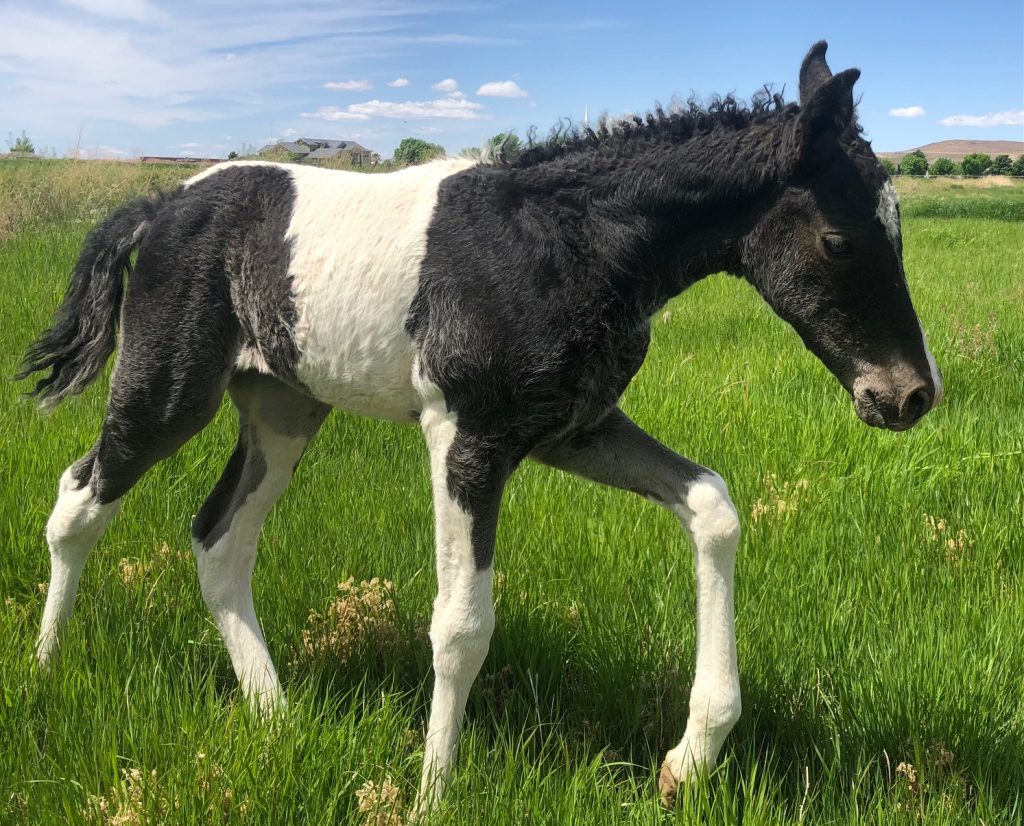Curly Fox Trotters stand out for their signature curly coats, blending the Fox Trotter’s smooth gaits with the Curly horse’s distinct curly coat gene. This guide delves into the pros of breeding Curly Fox Trotters with either homozygous or heterozygous genes and the benefits for their offspring.
Homozygous Curly Fox Trotter (CC):
The prime advantage of a homozygous Curly Fox Trotter (CC) is the guaranteed production of curly-coated progeny. Regardless of the partner’s genetic makeup, a homozygous Curly Fox Trotter ensures every foal will exhibit a curly coat. This predictability is crucial for breeders aiming to uphold the curly coat feature consistently in their lineage.
For breeders valuing uniformity, a homozygous gene offers limited genetic variability, resulting in consistent coat types. By pairing two homozygous Curly Fox Trotters (CC x CC), breeders ensure every offspring is homozygous for curls.
Retaining a Homozygous Curly Fox Trotter (CC) population is advantageous. Breeding a homozygous curly with a straight-coated horse guarantees curly offspring every time. It not only increases genetic diversity but also, by adding a straight-coated horse to the mix, diversifies the gene pool. This genetic infusion minimizes inbreeding-related disorders and introduces varied coat textures and colors, pivotal for the breed’s long-term health and preservation.
Historically, due to the dwindling population of Curly Fox Trotters, breeders often mated curly with curly, hoping for CC offsprings. Zion’s Gait Curlies, in recent decades, have strategically bred Curly horses with top quality straight-haired Missouri Fox Trotters to incorporate the best traits, even if the curly outcome was just a probability. Occasionally, after such high-quality crossbreeding, we reintroduce the same bloodline to elevate the chances of CC progeny, ensuring this breed’s survival.
The filly in the above photo is an example of a CC Curly Fox Trotter. Note that as a foal, her coat almost looks like a straight haired horse. CC foals arrive looking this way and can decieve some owners. They also develop a tighter curled coat in adulthood. Breeders have coined the phrase “microcurled” coat to describe this type of curly coat. They also will have a bit thinner manes and tails for reasons that are unknown.
Heterozygous Curly Fox Trotter (Cc):
The heterozygous Curly Fox Trotters (Cc) stand out for their breeding flexibility. When paired with non-curly horses (cc), the outcome can be Smooth Coat Curlies (straight-coated offsprings). This adaptability broadens the market reach, presenting options of both curly and Smooth Coat Curly foals for prospective buyers. Given that Smooth Coat Curlies are hypoallergenic and typically priced lower than their curly counterparts, many buyers find them appealing, especially those who favor the straight hair look.
Conclusion:
Whether homozygous or heterozygous, each Curly Fox Trotter brings distinct advantages to breeding. The preference boils down to the breeder’s objectives, priorities, and program needs. While homozygous Curly Fox Trotters ensure every offspring sports curly coats, the heterozygous ones offer versatile breeding outcomes. Breeders must align their decision with their herd vision and breeding goals.
